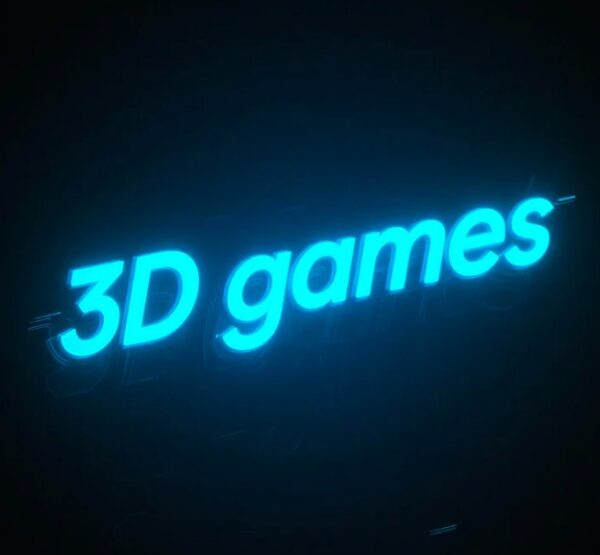In the evolving landscape of digital entertainment, the dominance of 3D games over their 2D counterparts has become a measurable and significant trend. From global revenue numbers to platform adoption rates, the data paints a clear picture: modern players overwhelmingly favor immersive 3D environments. This article explores the core reasons behind the commercial success of 3D games, backed by hard data and industry analysis, while also examining the implications for developers, publishers, and investors in the tech and gaming industries.
3D Game Sales vs 2D: Key Market Insights
Revenue and Unit Sales Disparity
Recent market data underscores a significant sales gap between 3D and 2D games. According to Statista, the global video game industry generated $184.4 billion in 2023, with over 75% of that revenue attributed to 3D titles. In comparison, 2D games, which still find popularity in mobile and indie niches, accounted for less than 18% of total game sales.
- Steam Top 100 (2023): Over 90% of the best-selling games featured 3D graphics.
- AAA Development Trends: All major 2023 releases from studios like Ubisoft, EA, and Activision were 3D-centric.
These figures reflect not only player demand but also where studios are directing their development budgets and innovation resources.
What Drives the Popularity of 3D Games?
1. Immersion Through Realism
3D environments allow for spatial depth, dynamic lighting, and physics-based interactions that closely simulate the real world. These elements create a sense of presence, which is critical in genres like open-world RPGs, first-person shooters, and racing games.
Player retention rates for 3D open-world games are often 30-40% higher than their 2D counterparts due to richer content and exploration potential.
The growth of VR and AR gaming—both reliant on 3D rendering—further fuels this demand.
2. Broader Genre Applicability
While 2D games excel in platformers, puzzle games, and retro styles, 3D formats dominate across more revenue-rich genres:
- RPGs and MMOs: Titles like Elden Ring and Final Fantasy XVI require detailed 3D environments.
- Simulation and Sandbox Games: Games such as Minecraft and The Sims depend on 3D spatial logic.
- Esports: Leading games in competitive gaming (Valorant, Dota 2, CS:GO) are all 3D.
3. Visual Expectations of Modern Gamers
Today’s gamers are conditioned by cinematic graphics, realistic physics, and lifelike characters. The widespread adoption of ray tracing, 4K resolution, and motion capture technologies has raised the bar for visual fidelity, something 2D games rarely match in terms of sensory engagement.

Technological Advancements Favor 3D Development
GPU and Engine Innovation
The performance of consumer-grade GPUs (like NVIDIA’s RTX 40 series) enables real-time rendering of complex 3D scenes with minimal latency.
Game engines such as Unreal Engine 5 and Unity HDRP offer robust toolkits specifically optimized for 3D workflows, including physics, AI, and animation systems.
Asset Libraries and AI Acceleration
The availability of scalable 3D asset libraries and the integration of AI-assisted procedural generation reduce development costs and time, making 3D development increasingly accessible—even for smaller studios.
When 2D Still Wins: Niche Success and Artistic Freedom
Despite being overshadowed in revenue, 2D games are not obsolete. In fact, they continue to thrive in specific use cases:
- Indie Games: 2D art styles offer lower production costs and faster turnaround, ideal for small teams.
- Mobile Platforms: Due to hardware limitations, 2D games remain dominant in mobile puzzle and casual genres.
- Artistic Intent: Some developers prefer 2D to deliver stylized, narrative-driven experiences like Hollow Knight or Celeste.
However, these markets represent niche segments compared to the mainstream appeal and monetization opportunities of 3D games.
Strategic Implications for the Tech Industry
1. Investment Focus
Investors should prioritize platforms, engines, and services that cater to 3D game development. Companies offering cloud-based 3D rendering, motion capture solutions, or real-time collaboration tools for 3D modeling are positioned for significant growth.
2. Hardware and Peripheral Ecosystem
The demand for VR headsets, ultrawide monitors, and haptic feedback devices correlates with the popularity of 3D gaming.
Peripheral manufacturers should align their innovation pipelines with trends in 3D-first development.
Conclusion
The data speaks for itself: the gaming world has moved firmly into the 3D era, driven by technological progress, market expectations, and genre diversification. While 2D games still hold artistic and economic relevance in select sectors, the future of mainstream gaming—both in terms of player engagement and financial returns—belongs to 3D. For tech industry stakeholders, this shift isn’t just a trend—it’s a roadmap.





